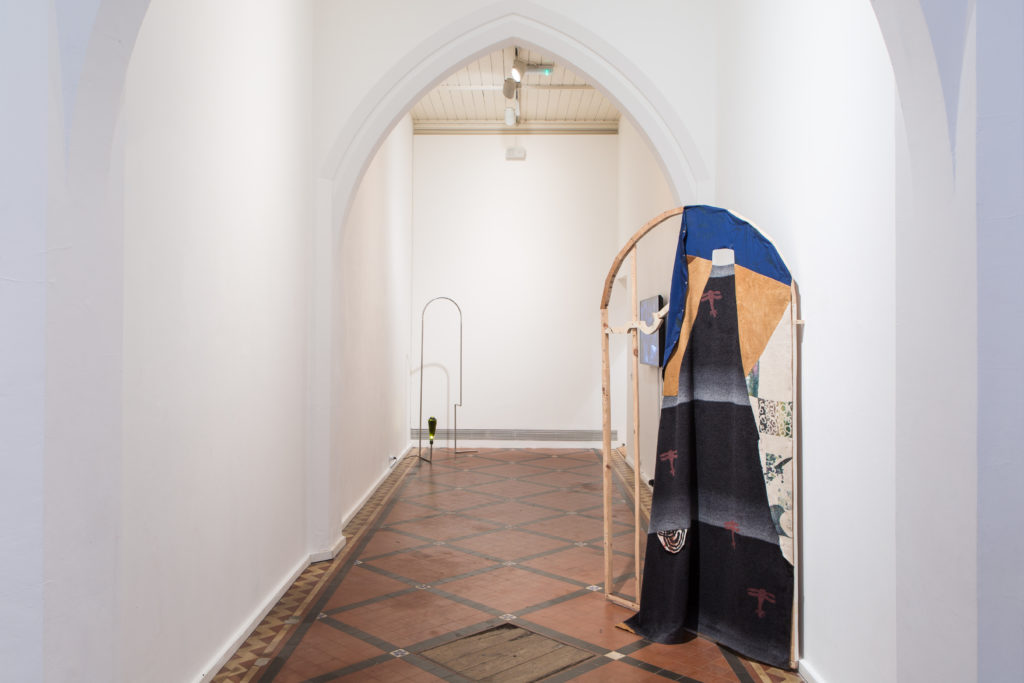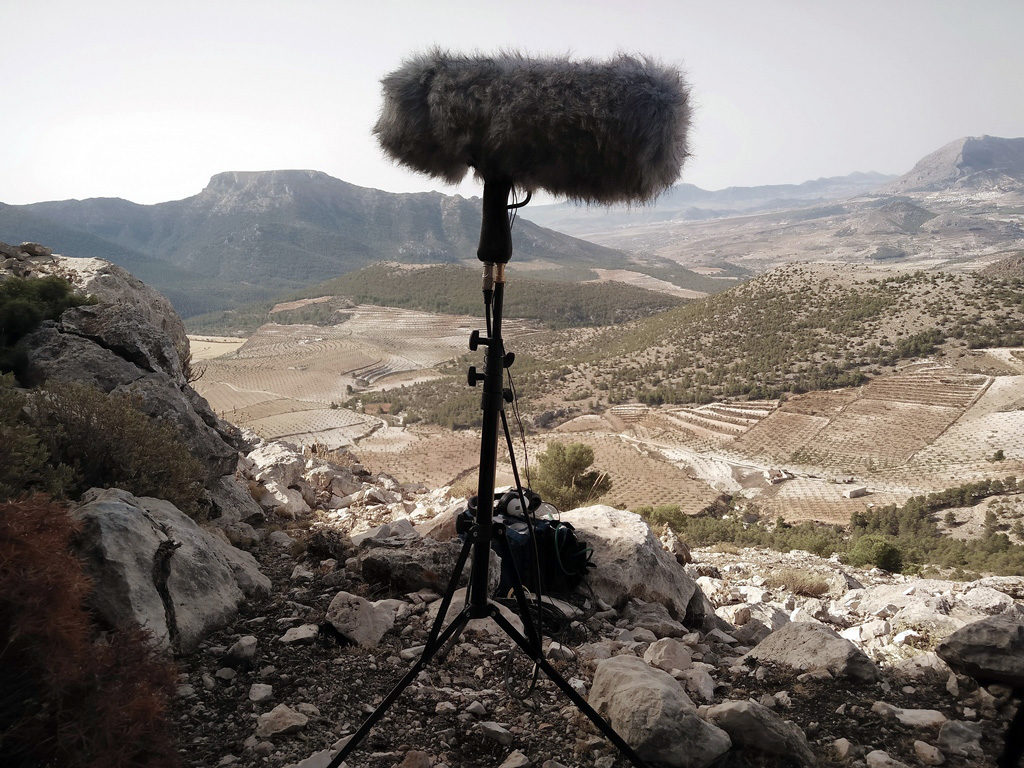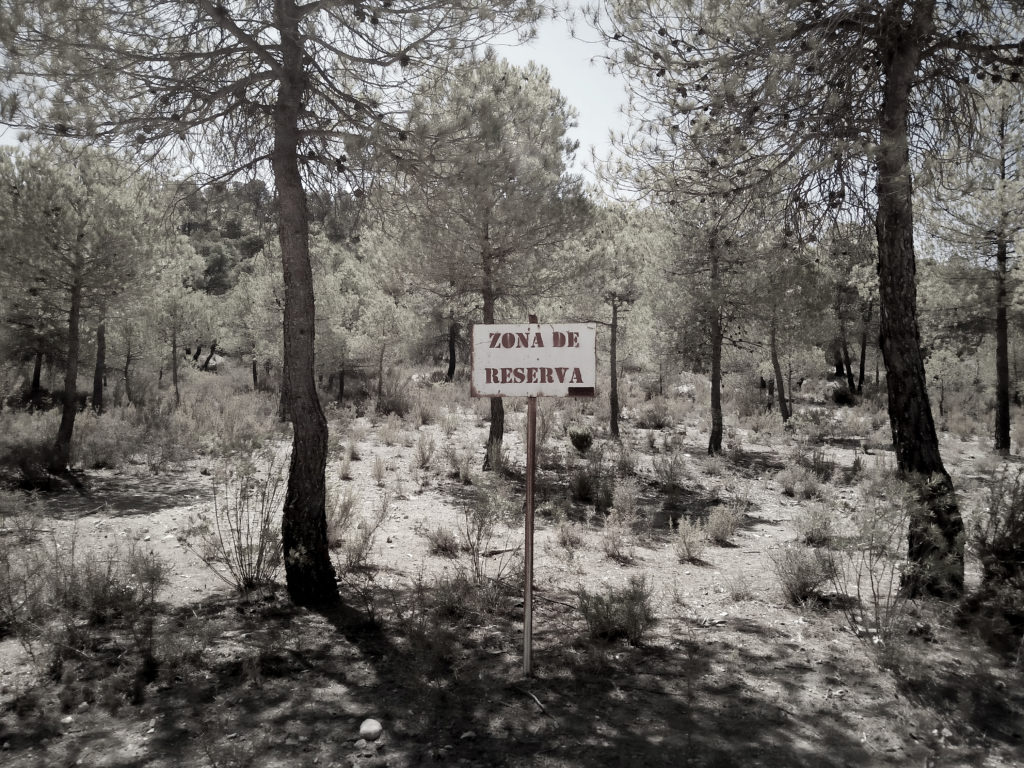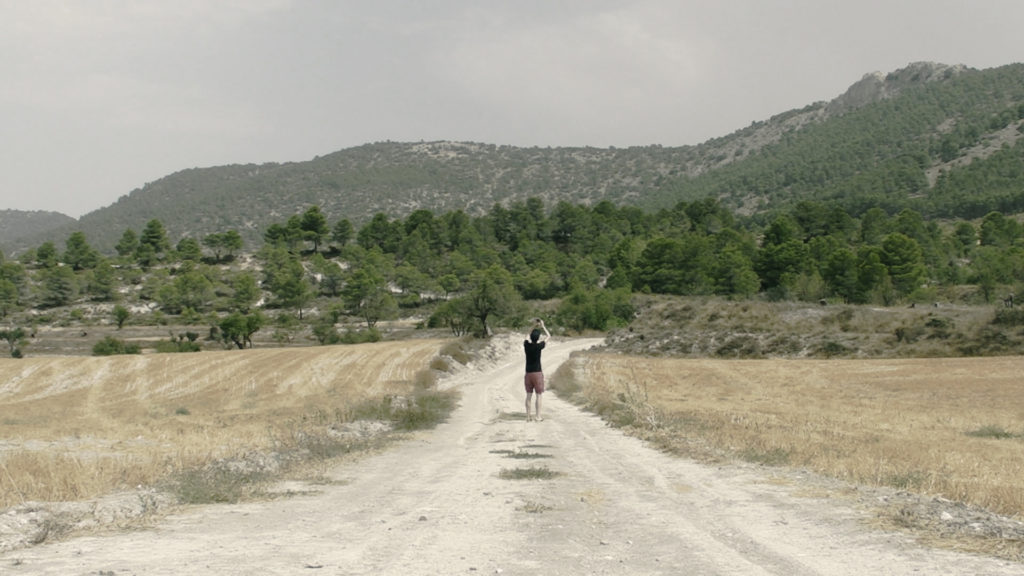Specification
Stereo sound work (loop) 53mins 33secs (2018)

Electrostatic Borderlands
In the spring of 2016, I applied to the Art for the Environment International Residency Programme (AER) organised by Professor Lucy Orta at the University of the Arts London. The residency programme offers artists an opportunity to “explore concerns that define the twenty-first century – biodiversity, environmental sustainability, social economy, human rights – and through their artistic practice, envision a world of tomorrow” (“Art for the Environment Residency Programme,” 2018). My application was successful and in the summer of 2016, I spent fifteen days in El Cortijada de Los Gázquez, an off grid residence located in an alpine desert, 1000m above sea level in the Parque Natural Sierra María – Los Vélez, Spain. What struck me about the opportunity to visit Los Gázquez was the idea of spending two weeks off-grid. Two weeks disconnected. What might two weeks offline, away from the superconnectivity of urban living afford for me? What did off-grid mean? What kind of systems would be in place to live an off-grid sustainable life?
I was also interested in listening to the off grid environment of Los Gázquez; far from any built up metropolitan centre, far from where I tend to spend most of my life, in the anthropogenic urban wash of cars, generators, ambulance sirens and helicopters, WiFi signals and data roaming charges, impossible to distinguish between one set of signals and the next. I wondered what a rural and open landscape might offer as an alternative field to my listening and recording practice. In Los Gázquez, I wanted to experience being disconnected from the internet but I also wanted to study the infrastructure of an off grid site and its sustainability. The off-grid valleys of Southern Spain offered a potential comparative listening site for sonospheric investigation.

I spent most mornings exploring the estate and beyond into the National Park, recording sounds and vibrations using various mixes of tools from the sonopalette: acoustic microphones; a geophone (low frequency transducer); an electromagnetic coil transducer; and contact microphones. I amplified and recorded the material through a Sound Devices 442 ENG field mixer and onto a Tascam DR40 PCM digital audio recorder. With these field recordings I created a library which was led at first by personal intrigue, then by a series of experiments listening to anthropogenic noise and proximity, and finally according to a survey of favourite sounds that the residents associated with living in Los Gázquez. Recordings comprised goats, crickets, sheep, vultures, wind turbines, water pumps, photovoltaic panels, clay fizzing with water, children playing games, people eating dinner, flip flops across the concrete floor, diesel generators, a Land Rover, the near-silence on top of a mountain, electromagnetic noise from battery stores, electromagnetic interference from a phone attempting to connect to a distant and patchy 4G signal, helicopters and distant jumbo jets. As a city dweller, Los Gázquez and the surrounding area felt incredibly remote at first, but the sense of what could be defined as being ‘off-grid’ became looser than I had anticipated. The family home had electricity, and Wi-Fi signal from a satellite uplink that connects to a suborbital network and bounces back to an exchange in Italy. The landscape surrounding Los Gázquez had signs of anthropogenic activity everywhere, from the failed and abandoned monoculture farm terraces, to the water catchment systems, to the artificial walls and tributaries built within the Barrancos (water drainage, fluvial systems drawing down from the mountainside).

I embarked on many solitary walks into the Parque Natural Sierra María, deciding upon an arbitrary bearing and heading off to find out what might happen. As I walked, I listened carefully to changes in sound; the flies, the trees, the wind, and affect; the nothingness, the everything-ness, and the exhaustion of my never ending thoughts. I recorded infrasonic vibrations with geophones, contact transducer microphones on vibrating bodies of metal, stereo microphone recordings of my position in the landscape and electromagnetic frequencies with coil-tap transducers. I recorded myself, my breath, my movements, my thoughts, my voice and my presencing in space. My ambition to remain disconnected from the Internet lasted for five days. On day five of the residency, whilst marching up the tallest mountain in the park; rucksack full of equipment; a head torch guiding the way, I encountered a fox, two vultures and an ibex in their natural habitats. During the previous four days I had no signal in the base of the national park’s valley but I carried my phone in my pocket at all times, to be used as a compact camera. Just after I witnessed the two vultures launch from the crag at the top of the valley, my headphones were filled with electrostatic interference and a few moments later, my pocket began to vibrate. Atop a mountain, as far away as I thought I could get from anthropogenic din, at my most isolated, I discovered that in Europe you are never far away from indexes of human activity; whether it be road signs from the past 30-40 years, detritus from the past 300-400 years, or a 4G signal. The marks were everywhere, not just as visual scars on the terrain but as hertzian spectra floating through the atmosphere, unseen but heard.

Exhibitions
This work was commissioned for the Art for the Environment exhibition at The Nunnery Gallery, London, UK in 2018.
One thought on “Electrostatic Borderlands”
Comments are closed.